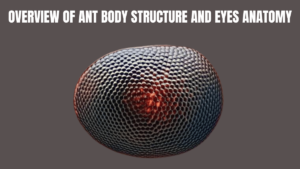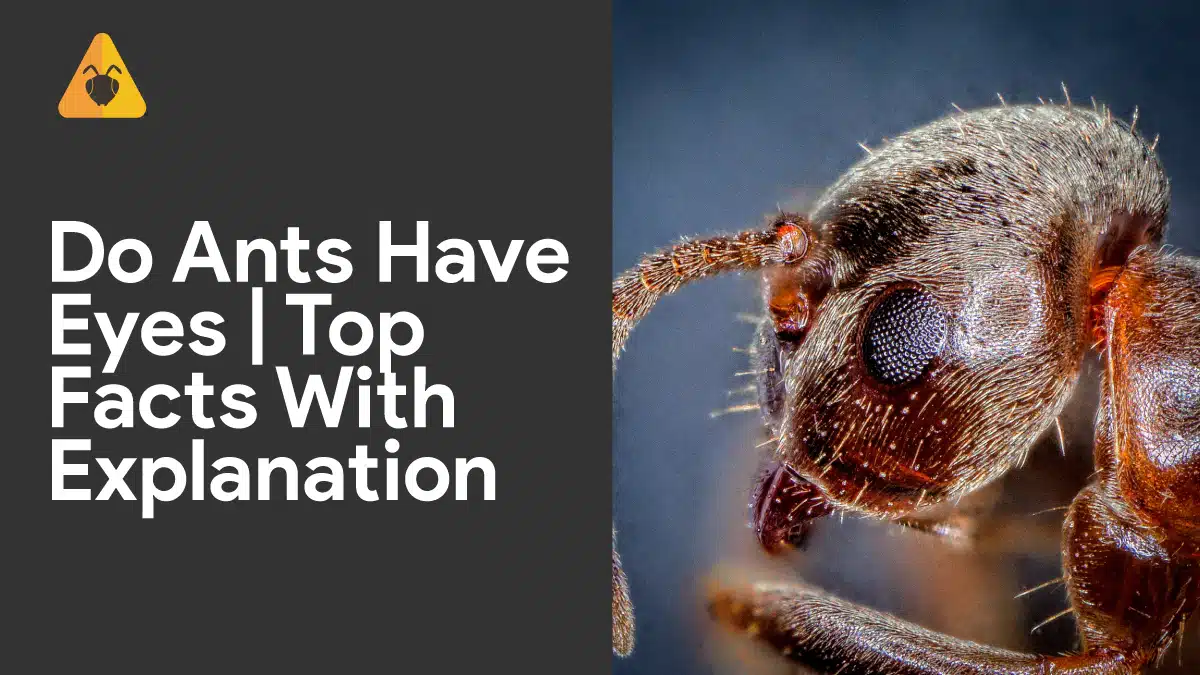Do ants have eyes? Ants are members of the insect order Hymenoptera and the Formicidae family.
They are enthralling creatures. Ants are small insects that live in groups known as colonies.
Each ant in the colony is assigned a certain task. Except for the severely frigid regions of Antarctica, we can find almost everywhere ants on the planet.
They are well-known for their extraordinary ability to collaborate in a highly organized manner, demonstrating attributes of discipline and collaboration.
Ants fascinate people because they have a complex social structure.
Each ant has a specific function for the colony to survive and thrive.
For generations, scientists and nature enthusiasts have been attracted by these critters’ complicated communication systems, division of work, and problem-solving abilities.
Furthermore, ants play a crucial role in ecosystems.
They aid in the transmission of seeds, the breakdown of dead plants and animals, and control of other insect populations.
Scientists study ants to learn about their social behavior, evolution, and environmental interactions.
Myrmecology is the name given to this branch of study. It aids us in understanding crucial aspects of ants.
Table of Contents
Overview Of Ant Body Structure And Eyes Anatomy

Ants have a unique body structure, which is why they are different from other insects.
They have three main body segments, head, thorax, and abdomen.
Ants head consists of various important organs, including the mouthparts and sensory organs.
One crucial aspect of ant anatomy is their unique eyes.
Types Of Ants Eyes
Ants have two types of eyes. These eyes are called compound eyes and simple eyes.
The compound eyes are found on the sides of the head. They have many small lenses called ommatidia.
These lenses help the eyes see the world in a mosaic pattern.
The simple eyes, also known as ocelli, consist of three tiny lenses on the top of the head.
Ants have special eyes called compound eyes.
These eyes help ants see things that are moving and help them move around.
Another part of their eyes, ocelli, helps ants sense how bright it is outside.
This helps ants know the time of day and find their way back home to their nest.
When ants have both types of eyes, their visual abilities get better.
This helps them hunt and gather resources more effectively.
How Ants See? Ant Vision
The way ants see things is very different from how humans see things.
Humans use their eyes to see the world, but ants mainly rely on their antennae.
Grasshoppers have compound eyes.
These eyes have lots of small lenses. The lenses help the grasshoppers see things that move.
They can also tell the difference between light and dark.
However, they are not very good at seeing small details.
How Many Colors Ants Can See?
Ants have compound eyes that limit the colors they can see. Studies have found that ants are mostly sensitive to the blue and ultraviolet parts of the spectrum. They likely see in shades of blue and black/yellow. Specifically:
- Ants have poor color vision in comparison to humans. This is due to their compound eye structure and limited photoreceptor types.
- Ants have two main photoreceptor types in their eyes: one that is most sensitive to ultraviolet light and the other that absorbs blue light.
- Based on these two photoreceptors, researchers think ants can distinguish between blue/violet and yellow/black objects fairly well.
- Ants probably see a limited range of blues and yellows but cannot distinguish the full spectrum of colors humans see.
- Their basic color vision helps them find food sources and navigate using landmarks with contrasting colors.
- Ants rely more on shape, pattern, texture, and light intensity than the full-color spectrum for visual cues.
Role Of Ant Eyes In Behavior
Ant eyes are very important for ants. They help ants with their behavior and survival.
Insects have eyes made up of many small parts called ommatidia.
These parts help insects see a big area around them.
Ants can effectively navigate their surroundings, even in complex and dynamic environments.
Navigation abilities
Ants use their eyes to see things around them, like landmarks and trails made by other ants.
These things help ants know where to go. Moreover, ants use their eyes to locate food sources.
Finding food
Ants can see very well.
They use their sharp eyes to find and identify food. This helps them find and gather resources fast.
Communication among ants
Do ants have eyes? Moreover, ant eyes play a crucial role in helping ants communicate with each other.
Ants can see visual signals from other ants.
These signals include body language and movements.
These signals help ants share information about where to find food, possible dangers, and even signals for mating.
Ant eyes are very important for coordinating and organizing the activities of a colony.
They help ants adapt and survive in their environment.
Do Ants Have Eyes? Differences Between Ant And Human Eyes
Do ants have eyes? Ants and humans possess eyes that are very different from each other.
Humans have two eyes that are positioned forward on their faces.
However, ants have compound eyes that are made up of thousands of small lenses. Ants have eyes on the sides of their heads.
This helps them see a lot of things around them.
Ants have a hard time seeing small things, unlike humans. Ants have compound eyes.
Each lens in an ant’s compound eye can only make a low-resolution image.
But ants make up for this by being good at sensing movement.
Their compound eyes can detect motion, allowing them to notice even the smallest changes in their surroundings.
In addition, ants can see many different colors. They can see colors that are not visible to humans, such as ultraviolet and other wavelengths.
However, humans possess eyes that are highly developed.
These eyes can perceive fine details, colors, and depth perception.
The reason for this is how the human eye is built.
It has one lens and a retina with many special cells called cones and rods that can sense light.
The differences in eye structure show how ants and humans have evolved to adapt to their environments and visual needs.
Video Of Do Ants Have Eyes
In Conclusion
Do ants have eyes? We investigated how their compound eyes are constructed and function.
These eyes have several ommatidia, each functioning as a distinct light receptor.
This analysis taught us that understanding and vision are critical in various contexts.
First, consider how ants see the world.
Ants utilize their eyes to assist them in figuring out where they’re heading when they look around.
This is significant because ants must be able to traverse their environment.
Scientists can learn more about how ants navigate the environment by researching how they see.
Next, consider how understanding and vision can help us develop more effective pest control methods.
Because ants use their eyes to hunt food, understanding how they see can be beneficial.
Ant vision can reveal vital details about the evolution of insect vision.
Ants are a successful group of insects that come in various varieties.
Understanding how ants perceive things can help us understand how all insects perceive things.
In conclusion, this study demonstrated the importance of understanding and eyesight and how it affects several regions.
I hope you enjoyed reading it!
FAQ.s
How many eyes do ants have?
Most ants have two compound eyes, each consisting of thousands of individual lenses (ommatidia).
Can ants see in the dark?
While some ants adapt to low-light conditions, most are diurnal creatures and have better visual abilities during the day.
Do all ants see in color?
No, not all ants can perceive colors. Some species have limited color vision, while others can see a wide spectrum, including ultraviolet light.
Do ants have eyes better than humans?
No, ants do not have better eyesight than humans regarding visual acuity, but they excel in motion detection and other visual capabilities suited to their lifestyle.
How do ants detect food from a distance?
Ants follow pheromone trails which are left by other ants to detect food sources. Additionally, their motion-sensitive eyes help them spot potential food items in their vicinity.
Can ants recognize humans?
Ants do not recognize humans in the same way we recognize each other. To ants, we are likely perceived as large moving objects.
Related Articles
Ants In Bathroom | How We Can Get Rid! (Unique Ways)
Do Ants Have Brains: Science Behind Ganglia And Intelligence
Termites Vs Ants: Top Major Differences Between Both Of Them
